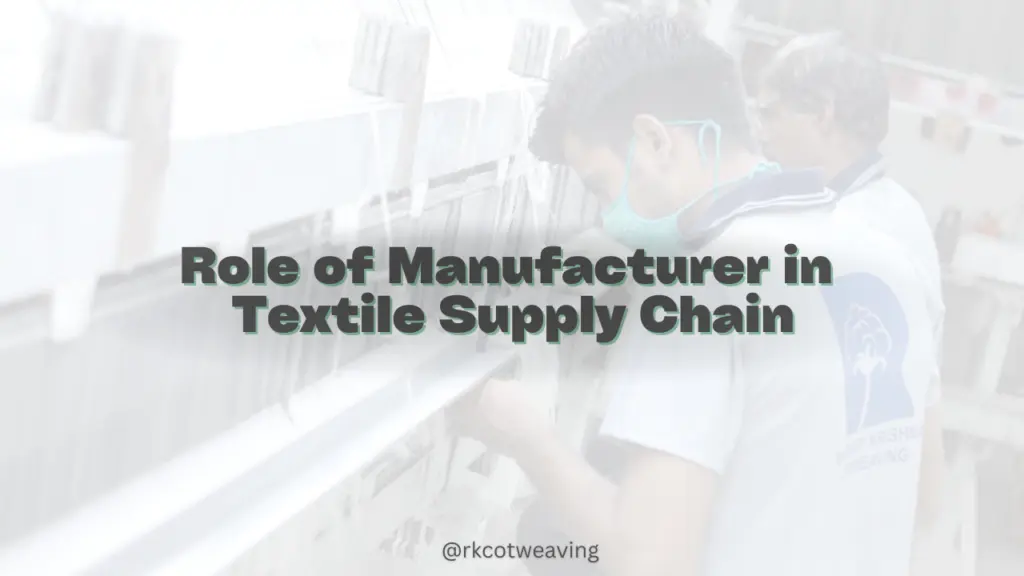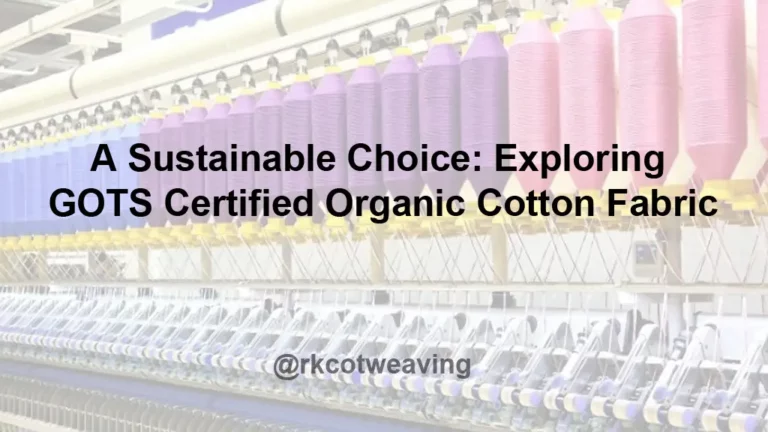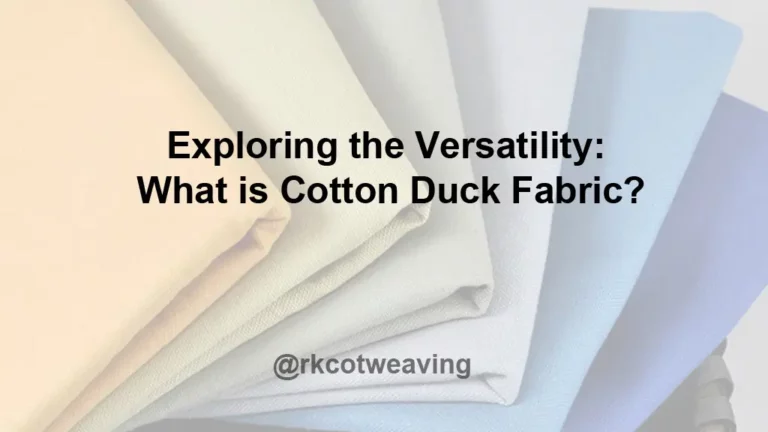Role of Manufacturer in Textile Supply Chain

The role of the manufacturer in the textile supply chain is integral to the success of the entire industry. The textile industry is a complex and multifaceted industry, with manufacturers at the heart of it. The manufacturer’s role in the textile supply chain is to produce the textiles and components used in the production of clothing and other textile products. The manufacturer is responsible for coordinating the production of raw materials, sourcing components, and ensuring the production process meets quality and safety standards. The manufacturer also must ensure that the products meet the customer’s specifications and requirements. Once the textiles and components are produced, the manufacturer must package, ship, and store the products until they are ready for delivery to the customer. The manufacturer must also ensure the products are delivered on time and in the condition promised. This includes working with the customer to ensure the product is delivered as requested. The manufacturer is also responsible for resolving any quality or delivery issues that may arise. The success of the industry is largely dependent on the manufacturers and their ability to produce quality materials, meet customer demand and provide competitive prices.
Raw Materials
Manufacturers play a crucial role in the textile supply chain by providing the raw materials used to create textile products. These materials include natural fibers, such as cotton and wool, as well as synthetic fibers like polyester, nylon and acrylic. The fibers are then spun into yarns and threads, which are then woven, knitted or braided into fabrics. Manufacturers must have a strong understanding of the different materials available in order to select the right ones for the job. They must also be aware of current trends in the industry so they can produce fabrics that are stylish and in-demand.
Weaving
Weaving is an integral part of the textile supply chain and plays an important role in creating a wide variety of products, from apparel to home furnishings. The weaving process involves interlacing two or more sets of yarns, threads, fibers, or wires to create a fabric. This fabric is then used to create garments, bedding, and other products. Weaving is a labor-intensive process that requires skill and precision. The process also helps to maintain quality standards by providing durability and consistency. By utilizing the weaving process, the textile supply chain is able to create fabrics with consistent quality, which helps to ensure customer satisfaction.
Quality
The quality of the materials and products produced by the manufacturers is a key factor in the success of the textile industry. Manufacturers must ensure that their products meet the highest standards of quality and safety. This requires them to have in-depth knowledge of the materials and processes used to produce the products. They must also have rigorous quality control systems in place to ensure that the products meet the required standards. This includes regular testing and inspections to ensure the products are free from any flaws or defects.
Timely Production
Timely creation of materials by manufacturers in the textile supply chain is essential for both the textile industry and its customers. Timely production ensures that customers receive their orders on time, and that the industry is able to meet its production commitments. Additionally, timely production helps to reduce costs associated with production, such as storage and labor. By ensuring that materials are produced in a timely manner, manufacturers can also reduce the risk of stockouts and overstocking, which can cause delays and other problems in the supply chain. Finally, timely production ensures that the industry is able to keep up with the ever-changing trends in the market and stay competitive.
Customer Demand
Manufacturers must be able to quickly and efficiently meet the changing demands of their customers. This means they must have the capacity to quickly adjust their production processes to cater to customer needs. They must also have flexible production methods that can be adapted to meet short-term or long-term customer orders. This requires them to have a strong understanding of their customer’s requirements and an ability to anticipate their needs.
Competitive Prices
In order to remain competitive in the market, manufacturers must be able to offer competitive prices for their products. This requires them to have a thorough understanding of the costs associated with producing their products and finding ways to reduce them. This may involve looking for new sources of raw materials that are cheaper or optimizing their production processes to be more efficient. They must also have strong bargaining power when negotiating with suppliers and customers to ensure they get the best deals.
Conclusion
The role of the manufacturer in the textile supply chain is essential to the success of the entire industry. Manufacturers provide the raw materials and finished goods that are used to create various textile products. They must ensure that their products meet the highest standards of quality and safety and be able to quickly and efficiently meet customer demands. They must also be able to offer competitive prices for their products. By doing so, manufacturers ensure that the textile industry remains strong and successful.
Radhey Krishna Cotweaving is one of India’s leading fabric manufacturers, with a long-standing commitment to excellence and innovation, the company has been producing and distributing fabrics to the Indian market. Radhey Krishna Cotweaving is renowned for its commitment to quality and timely delivery of products. The company employs stringent quality control measures and ensures that only the highest quality of fabrics and materials are used in the manufacturing process. This is done to ensure that their fabrics are of the highest standard and are compliant with all relevant industry standards.
*Disclaimer: The material and information on this website and blogs are provided solely for general information purposes. Author makes no claims about the accuracy or completeness of any information. The same is true for this site or any site reached by following any link on this site. The author cannot be held accountable for any errors or omissions in this information. You should not use the material or information on this website to make any business, legal, or other decisions.







